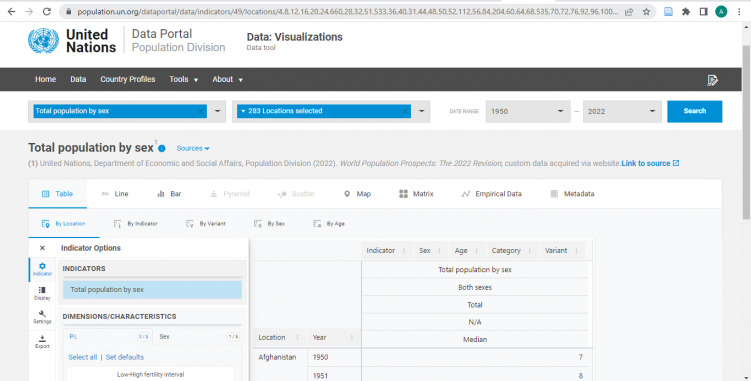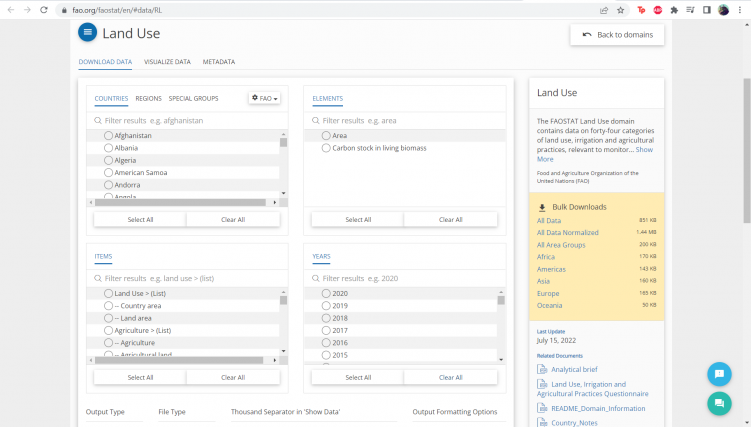Core Series
GDP and GDPPC
GDP related tables are routinely updated according to the schedule of IMF's World Economic Outlook. Note that we only take IMF's full WEO releases, which normally happen in April and Octorber each year. Detailed instructions on how to pull GDP & GDP PPP figures from WDI and IMF can be found here from our WIKI. Here we mainly explains the numerical relations between GDP at MER and PPP, as well as how the conversion is done from a current local currency unit to a constant international price (normally the US$).
POPULATION
Every two years, we update the population series in IFs by pulling data from the UN World Population Prospects. The UN updates this data biannually so we can expect to go through this process every two years.
As for all core series, every country must have a value for every year so it is important to check the data for any missing values before importing the series. Should you see missing data in any given year for any given country, you must find an alternative source to fill in the missing data. As of 2022, the UN has complete data for each country and year starting in 1950.
To find population data navigate to the UN World Population Prospects page. Locate the Data tab, then select Data Portal. This will bring you to the UN Population Division Data Portal where you can search for various population-related variables. For the Indicator select "Total Population by Sex", for Location select "Alphabetical" then click "select all" to check all countries. For the Data Range, we want all data available so select the earliest possible data (1950) to the current year. Once you have chosen all your parameters, click "Get Started and Search". This should generate the specified data in a table (see image below). To download the data, select "Export" and "Excel 2007+ (.xlsx)".
Once you have the data download you can go through the regular steps of importing a series. Start with a country concordance table and double check that all IFs countries are included in the dataset. ALL COUNTRIES MUST BE IN THE SERIES. If a country is missing, you will need to find an alternative data source. Next, you will need to check that there is data for every year. ALL YEARS MUST HAVE DATA. If there are years missing for any given country, you will need to find an alternative data source.
After checking that all countries and years are accounted for you may proceed importing the series via the normal process.
LAND AREA
Every few years, we will update Land Area from the FAOSTAT page. On the Land Area page you will find different categorizations. Depending on the data task at hand you will do one of two things.
BULK DOWNLOAD
If you are asked to update the preprocessors or all of Land Area data, you can utilize the bulk download option on the right hand side. In Bulk Download, you will find all of FAOSTAT's land use data (including agriculture). In this case the most important thing to take note of is the country concordance! Make sure all countries have values and if they don't, fill forward from previous years.
Individual Series update
For individual series first check in the DataDict for what source in file you have. Once you've located the source in file, find the same source on the Land Use page. Make sure the numbers on the Element and Item Code match when you generate the CSV files. Some of the Element and Item names can be duplicates.
Once you are done downloading and formatting the data you are ready to continue with normal pulling procedures!

